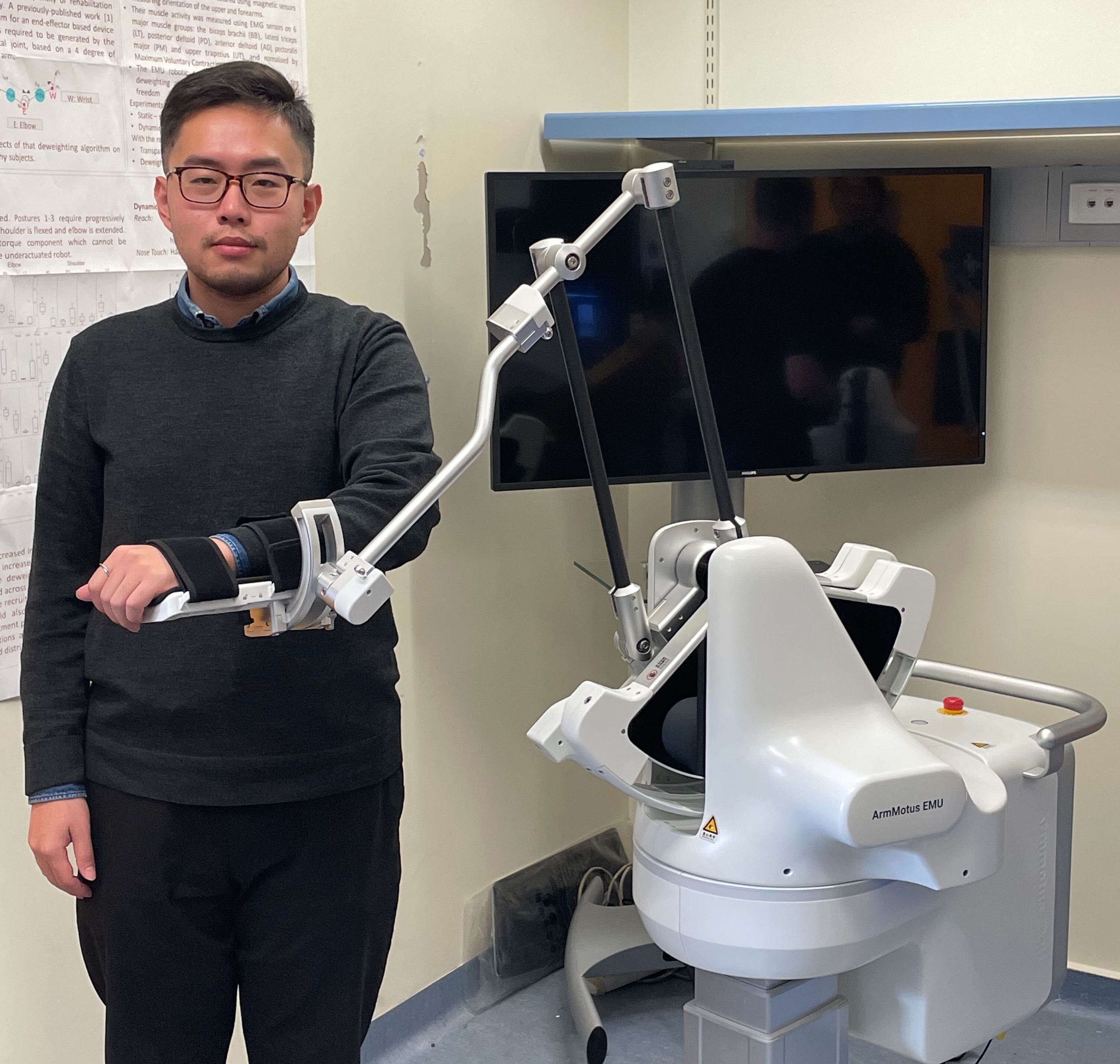Stroke patients around the world may soon have an effective rehabilitation resource at their disposal, thanks to University of Melbourne researchers and collaborators.
Stroke patients around the world may soon have an effective new rehabilitation resource at their disposal, thanks to University of Melbourne researchers and their collaborators.
A team of mechanical and mechatronics engineers from the University’s Faculty of Engineering and Information Technology worked with experts at the Royal Melbourne Hospital (RMH) and exoskeleton and rehabilitation robotics manufacturer Fourier Intelligence to develop an innovative, award-winning robot called ArmMotus™ EMU.
ArmMotus™ EMU is a 3D robotic rehabilitation device for the upper limb that will be useful in hospitals and rehab clinics. It offers varying levels of support based on the patient's needs, as well as full assistance through a variety of movements. It can be used from the very beginning of rehabilitation through to the later stages.
After several years of collaboration with RMH researchers on the use of robotics technology for rehabilitation, the team realised in 2016 that existing exoskeleton systems were either too complex to use or too limited in terms of the sets of movements that patients could practise.

Robotic devices have the potential to support increased rehabilitation intensity, but most existing devices are designed and developed without end-user input. ArmMotus™ EMU was created through a user-designed approach, and the final iteration incorporated feedback from clinicians and patients.
“These are key points for the adoption of robotics in this field where therapists’ time is limited,” says project leader Dr Vincent Crocher, from the Department of Mechanical Engineering.
Mechanical and Electrical engineers Professor Denny Oetomo, Professor Ying Tan and Dr Justin Fong were also on the EMU design and development team.
ArmMotus™ EMU allows easy set-up and assists patients to practice a large variety of movements and tasks. This makes it suitable for a large proportion of patients suffering a stroke and others whose arm mobility has been affected.
Dr Marlena Klaic, an occupational therapist who has assisted in EMU’s development, said it could significantly improve rehabilitation outcomes for many stroke patients.
“One of the most exciting features of EMU is that it can be used with 'real' objects, which is a fundamental component of task-specific practice. This was a highly desired feature for clinicians. The EMU can therefore combine the potential of increased repetitions of movements whilst practicing a real-life task, such as reaching for a glass of water,” Dr Klaic said. The team is currently setting up a new trial at St Vincent Hospital to study the impact of this task-oriented practice and further improve the usability of the device.
During development, several teams of mechanical and mechatronics students were involved, working on specific aspects of the design as part of their Capstone projects. The EMU robot has also been used as an experimental platform by two PhD students to experimentally-validate developed control algorithms.
ArmMotus™ EMU is now set for introduction in clinics overseas. Fourier Intelligence licensed the device and patent from the University. It is expected to be initially available in China, followed by the USA and Europe where regulatory approvals are currently being sought.
ArmMotus™ EMU was commercialised last year and having received the 2022 Red Dot Award, recently won the German iF Design Award, becoming the first rehabilitation robot to win two international design awards.
First published on 16 June 2022.
Share this article
Related items
-
Accelerating the discovery of novel cancer therapies
Researchers at the University of Melbourne have partnered with Pfizer to build on crucial research that will likely change the game for cancer immunotherapy.
-
Evidence-based lifestyle guides for minimising the impact of multiple sclerosis
Evidence-based lifestyle guides for minimising the impact of multiple sclerosis.
-
Running clinical trials during a pandemic: PEBBLES call for participants
Researchers need more families for a study testing skin cream designed to reduce the chance of babies developing allergies.